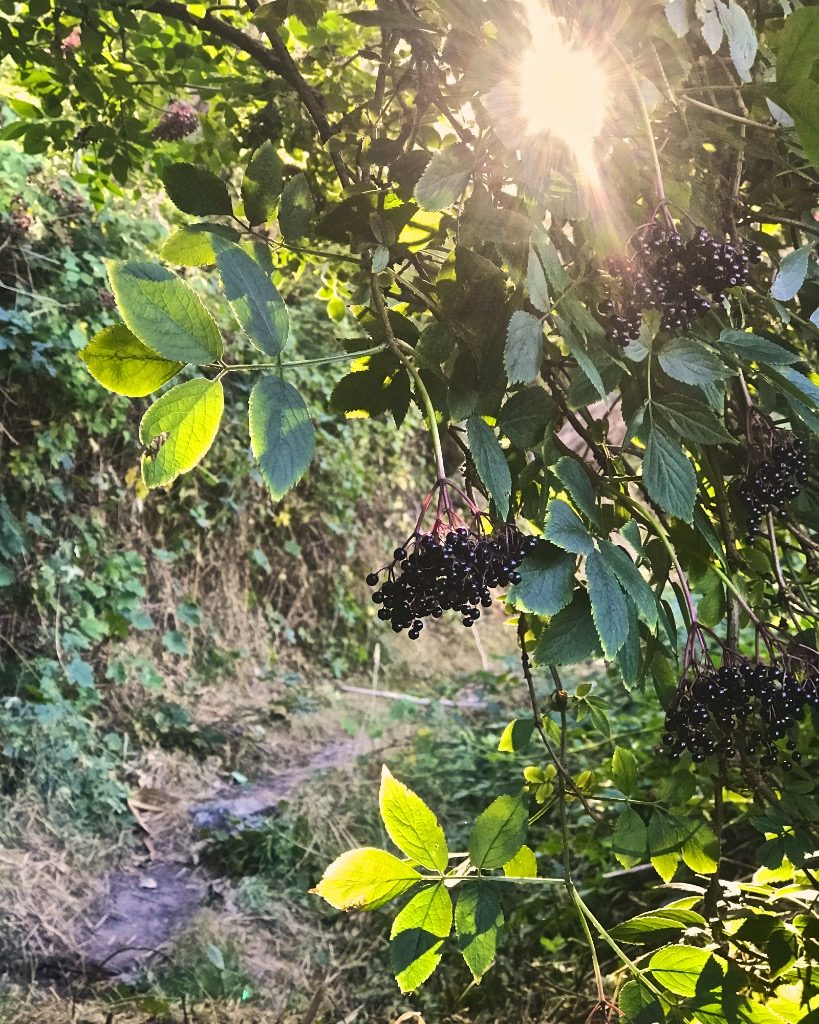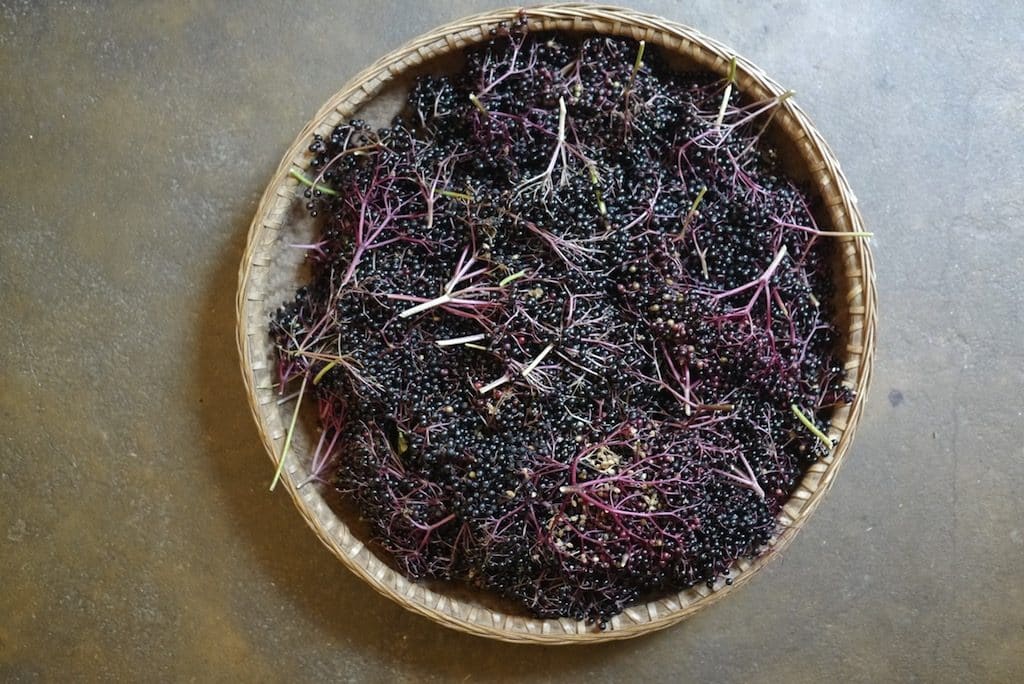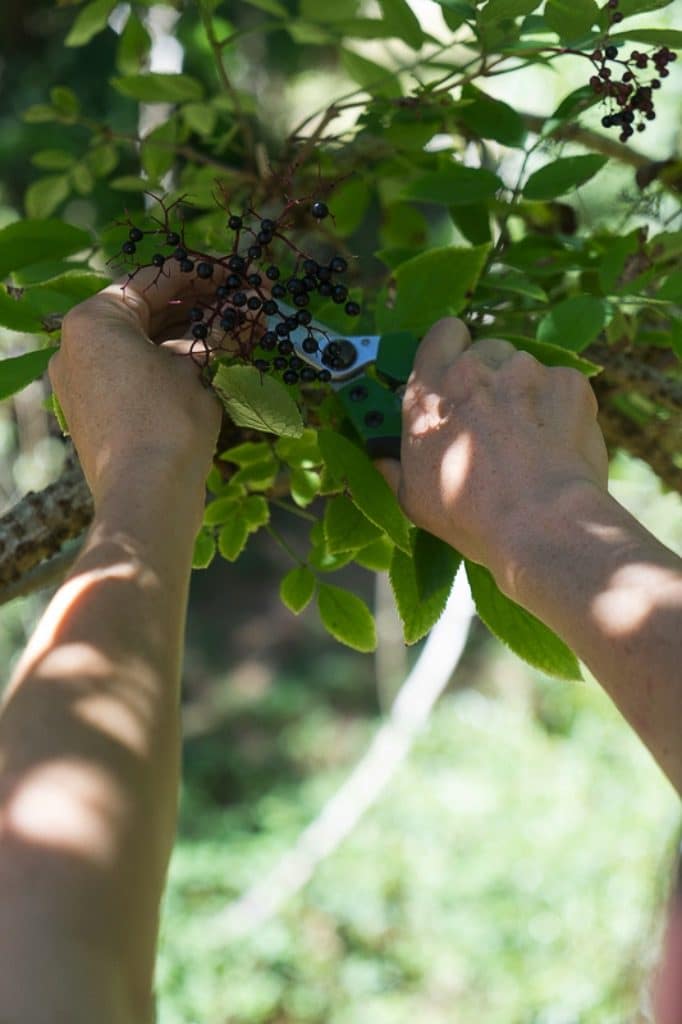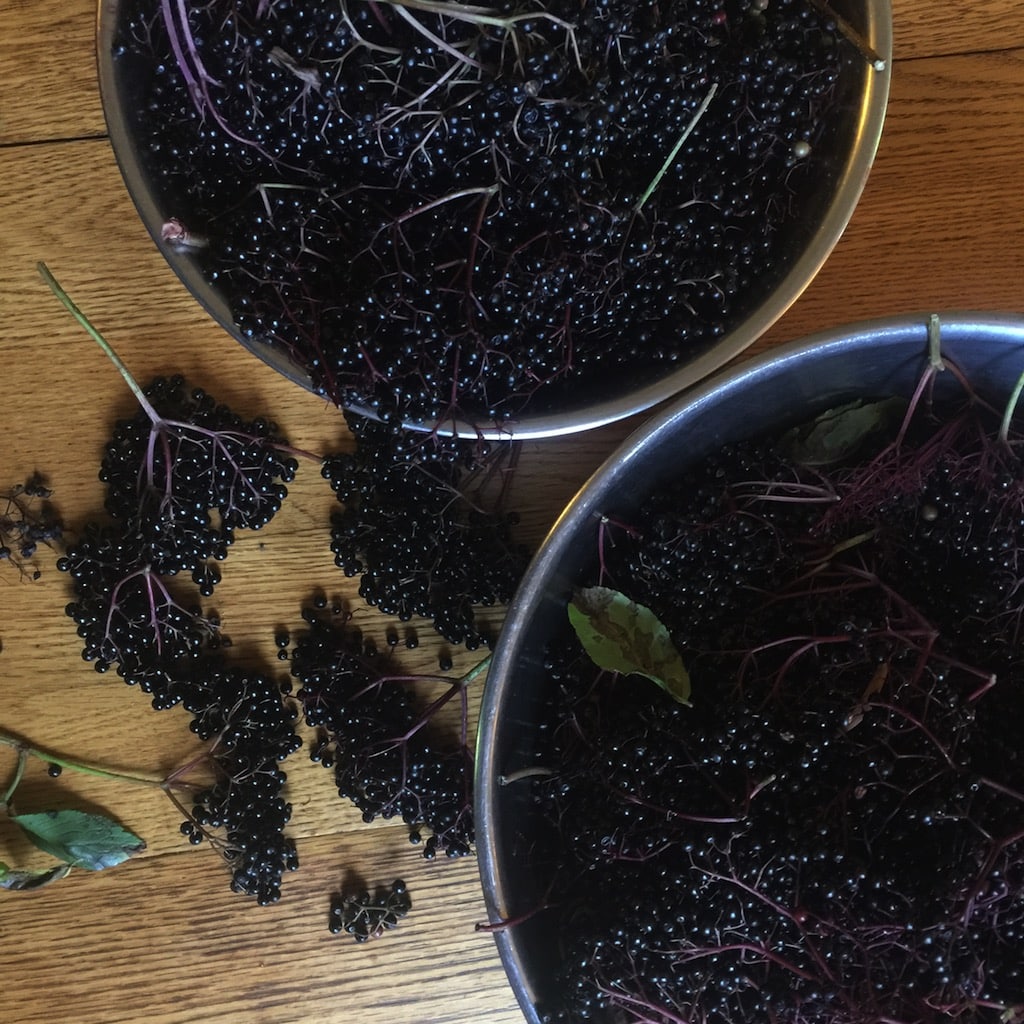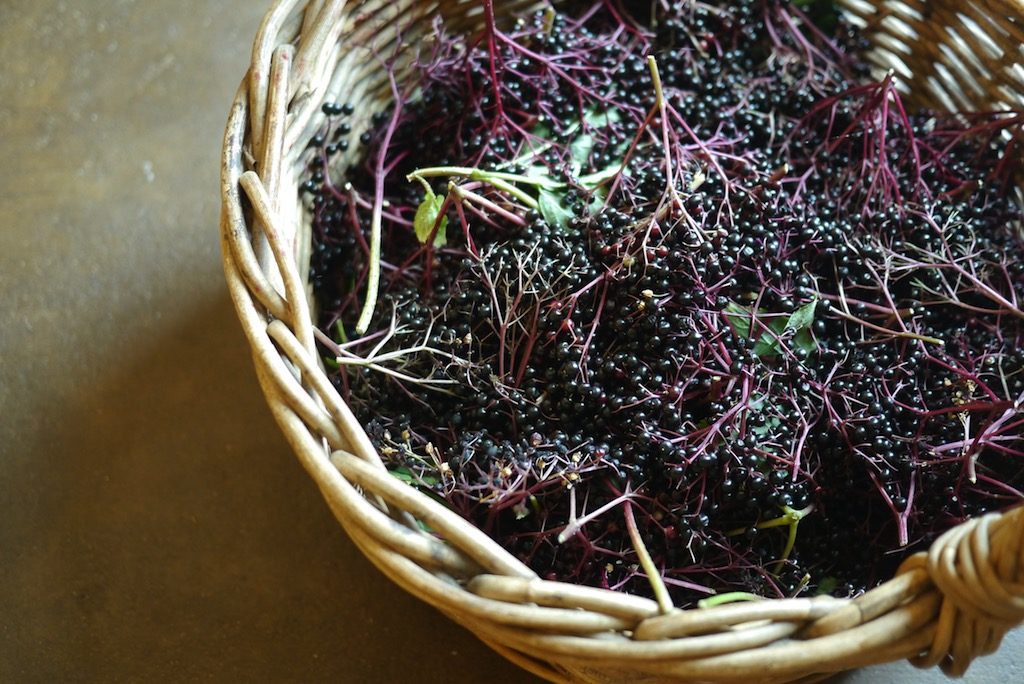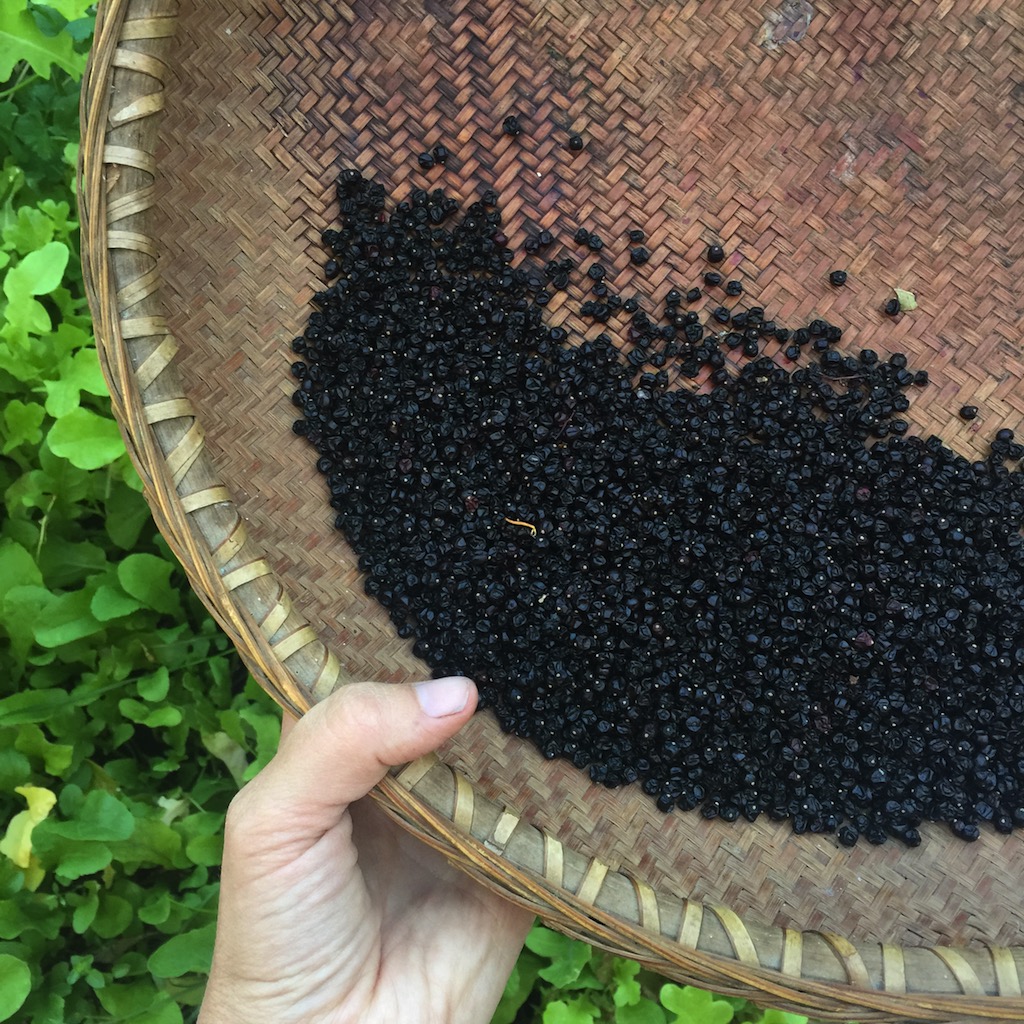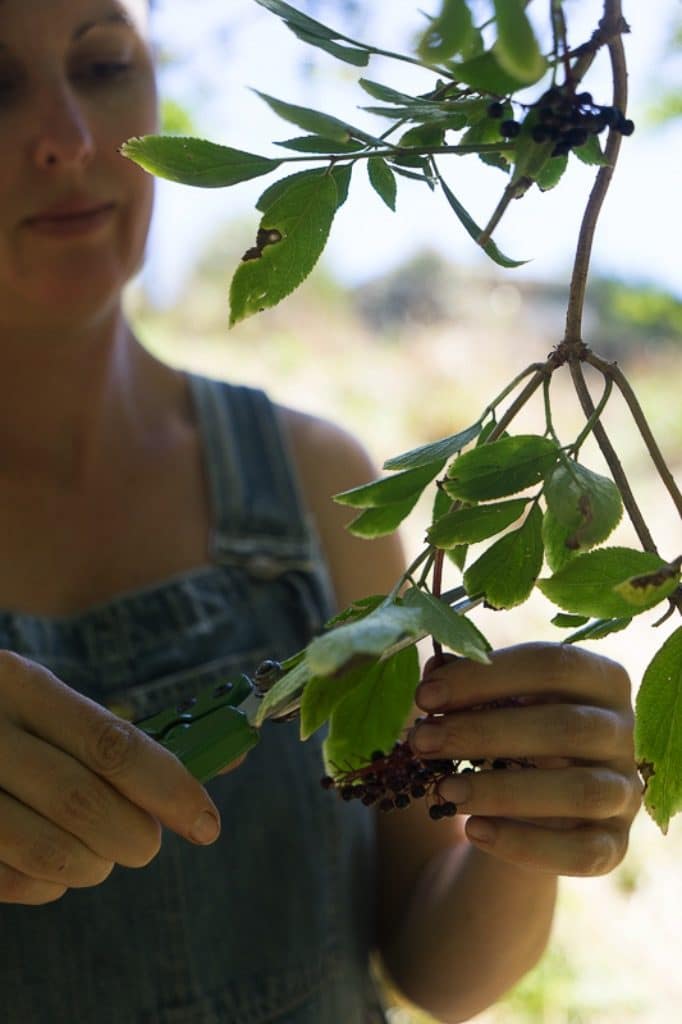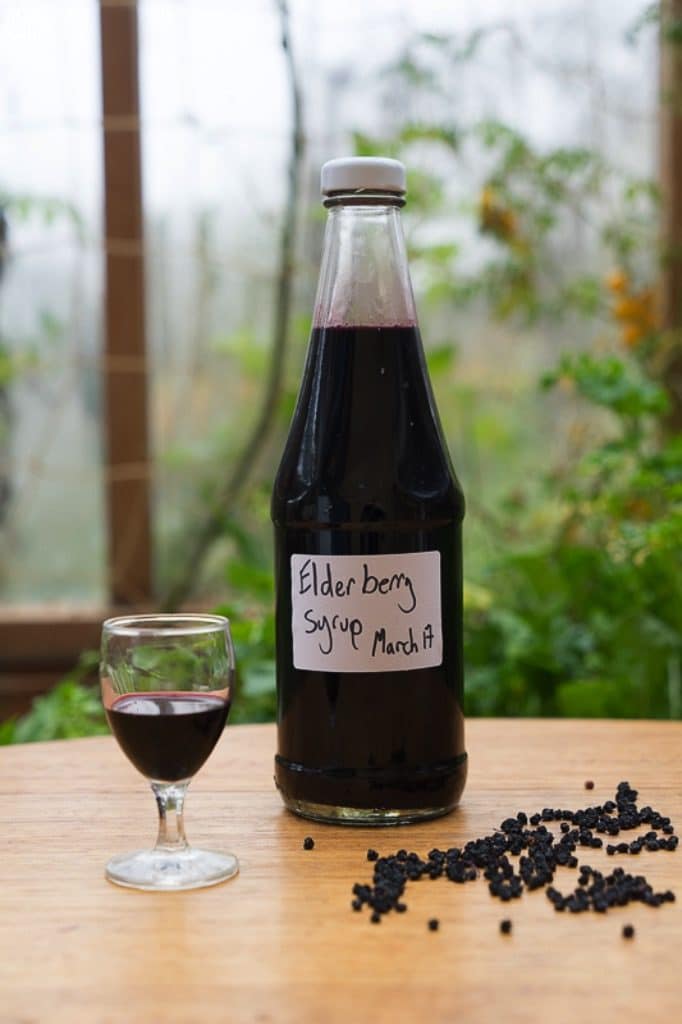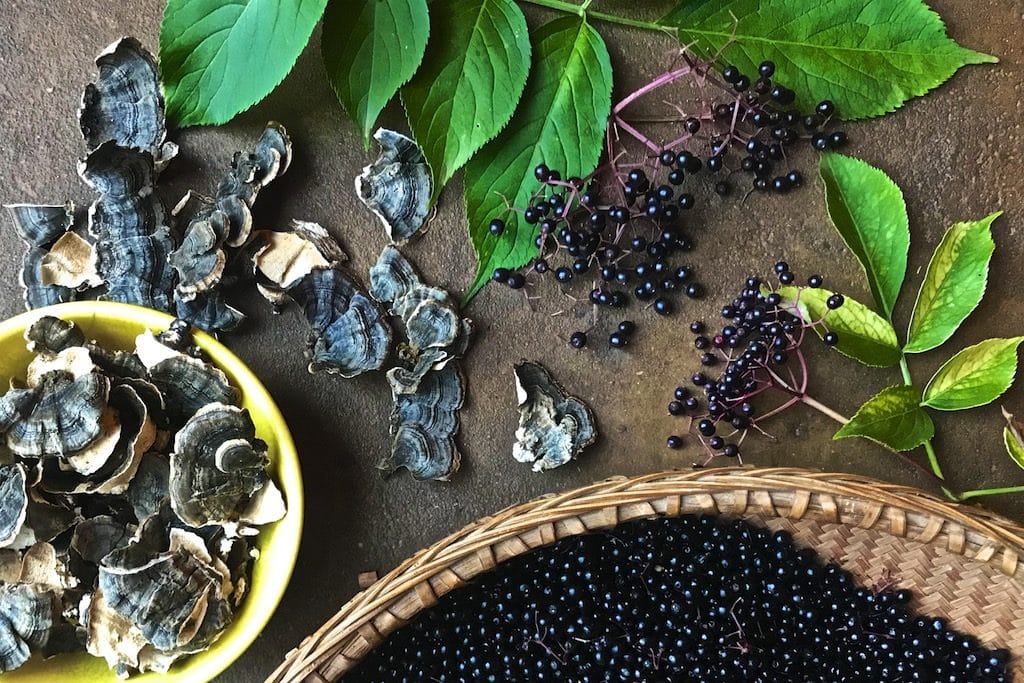Elderberry Everything: wine, vinegar, medicine + more
Author: Kirsten Bradley
Go to Source
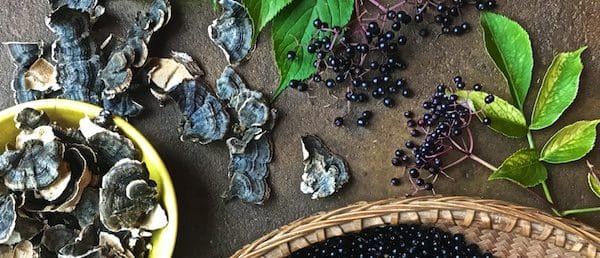
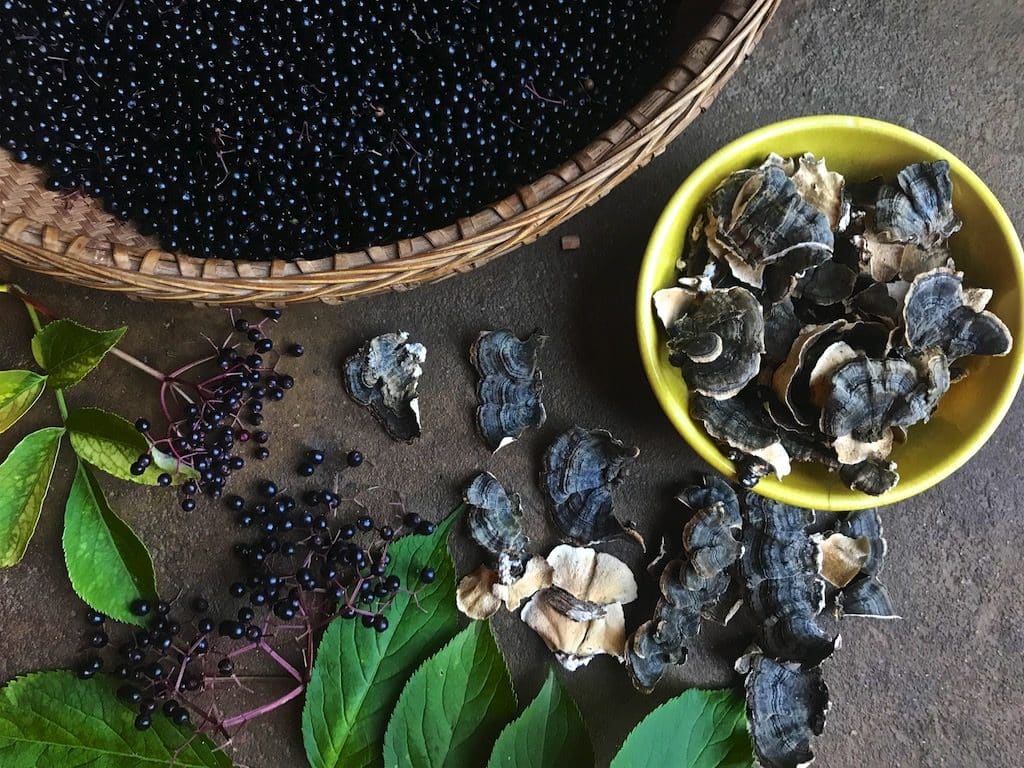
If you forage just one thing from the wilds (or your backyard) each year, please let it be elderberry.
Free medicine, wine and dessert vinegar could all be yours. Such an incredible plant!
The Elder
Native to most of Europe and north America, elder (Sambucus nigra) is a spindly
stemmed, fast-growing deciduous shrub that flowers wildly in spring, followed
by deep black clusters of berries. It requires fertile soils, but will grow in either
wet or dry conditions. There are many other Sambucus species that are also
known as elderberries, but Sambucus nigra is the one that is most commonly
eaten and used for medicinal purposes.
The elder is another old medicinal and beloved plant that has naturalised far beyond its native lands. It is a powerful plant that should be approached with caution as some parts of it can be toxic, particularly its larger stems, leaves and unripe berries, as well as its bark. The elder flowers and ripe berries can be gathered safely, however, and have such a special taste and beneficial attributes that learning how to deal with this lovely weed is entirely worthwhile.
Elderberries
Elderberries should only be picked when they are fully ripe. Since there are many species of elder around, do look up the one that you have nearby and check what constitutes ‘ripe’ for that species. Down the creeks of our area we have feral Sambucus nigra – the European or black elderberry – whose fruit is glossy black when fully ripe.
We gather the berries in summer and early Autumn along the creek and its hollows, returning bumped and scraped and smiling with great baskets and bags of berries.
Elderberries can be consumed in many different ways. They have been used in folk remedies as an immune booster since ancient times, and contain powerful antioxidants that aid recovery from colds and flu. Some people caution against eating the berries raw as it’s possible to have a reaction to them, however this is nullified when the berries are cooked or dried.
Processing
Removing the ripe berries from the stems can be a long-winded job, but there are workarounds. If you have a flat garden sieve with a gauge of 7 mm (1⁄4 inch) or so, you can rub the heads through it, collecting the berries in a bowl below. A fork works well too, for smaller quanities. Some people freeze the elderberry heads in a big bag, then shake the bag to make the berries easier to detach. Some just use their hands to shuck the berries from their stems.
Note that elderberries make an excellent and quite permanent dye, to
which the earthen floor in our home can attest – in large, permanent purple
blobs. The elderberries will always be with us.
Dried Berries
Drying elderberries on trays or baskets, stirred daily until they’re all dry, will yield shelf-stable dried berries that can be bottled and used in teas and also in medicinal tinctures. There’s a tincture recipe on page 286 of our book Milkwood that can be used for elderberry.
We throw a pinch of dried elderberries in pots of herbal tea, especially in the colder months – if steeped for a while, the berries give the tea a purple hue and a bonus immunity kick to whoever drinks it.
Elderberries also often make it into our WildWood Tea blend, which you can make too – a delicious snapshot of your ecosystem, in a teapot. The recipe (or approach, really) is here.
Vinegars – sweet, medicinal + sour
If you have sourced a lot of elderberries, dumping them in good quality vinegar is a great place to start. From there, you can make the most delicious dessert vinegar ever to grace your table, or medicinal brew to keep bugs at bay, all winter long.
There are many (so many) recipes and approaches for elderberry vinegars of all kinds, but here is our top three, that we use every year and highly recommend…
Elderberry Dessert Vinegar
This recipe came to us from Miles Irving’s Forager’s Handbook, and he attributes the recipe to forager-herbalist Mandy Oliver. Mind-blowingly good on spelt crepes with fresh goats cheese, or drizzled over dessert bowls of yogurt + fresh fruit. Or in salad dressings, or as part of a marinade (with our Plum Sauce – p 243 of our book in the Wild Food chapter, or here if you’re in a rush) or anywhere that needs a sweet sour woodland zing.
We do know a certain lady that swigs this direct from the bottle, but in our house it’s too precious for that. Do not be put off by the amount of sugar in this recipe! It is worth it and balances out beautifully with the other flavours. Persevere.
Our version of this uses apple cider vinegar and slightly less sugar than the original.
You will need:
- Elderberries, de-stemmed and weighed
- Apple cider vinegar (or apple scrap vinegar, if you like)
- Sugar (yes you can use honey, but it will taste different)
Weigh your elderberries and then put them in a big pot that you don’t need for a few days. Add 500ml of vinegar for every 350g of elderberries. Make a note of how much vinegar you put in, you’ll need this later.
Stir in, put a lid on the pot, and leave for 3 days in a cool place, stirring a few times a day.
Then, drain through a sieve, or a cheesecloth , into another pot. Squeeeze out every last bit of elderberry goodness you can. You can add the elderberries to something else at this point, or your compost.
Now add the sugar, in a one-to-one ratio. So if you have 1 litre of liquid, add 1 kg of sugar. Or 5oog sugar for 500ml of liquid, and so on.
Bring the mix up to simmer, stirring to dissolve the sugar. Simmer for 10 minutes, then bottle into very clean, hot bottles, all the way to the top, and seal bottles.
Label and hide from your family for a few months to let the flavours do their thing. Use on everything, and enjoy.
Easy Elderberry Vinegar
Oooh this one is easy. And so good. Excellent in salad dressings to give tang, a medicinal kick, and both colour and texture – as the whole berries remain in the vinegar.
De-stem your fresh elderberries and add to a very clean bottle, filling it 1/2 full. Pour over your favourite vinegar (we use apple cider vinegar) to fill the bottle.
Label and store for a few months somewhere cool before using, giving it a shake if and when you think of it, during this time. That’s it! Elderberry salad vinegar. Yum.
Medicinal Elderberry Syrup
We make this medicinal syrup each year that goes away into the cupboard until winter, then comes out to treat colds and flu, with big and small bottles being distributed throughout our community as needed.
It’s not actually a syrup in the super-thick, super-sweet sense of the word, but that’s what everyone calls this medicine. And if the name makes it more palatable to cranky sick people (both big and small), then we’re all for it. Dosage is commonly a few teaspoons, a few times a day either as a preventative when cold-weather sickness feels like it’s coming on, or to aid recovery.
This recipe is in our book, page 254.
You will need:
- 900 g (4 packed cups) fresh elderberries
- 2 teaspoons ground cinnamon
- 1 teaspoon ground cloves
- 6 litres (about 1.5 gallons) filtered water 2.5 cm (1 inch) piece of fresh ginger, grated
- 350 g (1 cup) honey
- 250 ml (1 cup) apple cider vinegar
1. Put the elderberries, cinnamon and cloves in a large pot. Cover with the water, then bring to the boil. Take off the heat, put the lid on the pot and leave the berries to steep overnight.
2. The next day, return the pot to the stove and add the ginger. Bring to the boil, then reduce the heat and simmer for 30 minutes.
3. Line a colander with a clean tea towel or cheesecloth. Pour the mixture through the colander and into another pot. Squeeze the elderberries in the tea towel to extract all the liquid (Your tea towel will be purple for a month or so after this operation, but it will wash out eventually). Give the elderberry mush to your chickens or add it to your compost.
4. Bring the liquid to a simmer, then add the honey and apple cider vinegar and stir to combine. At this point, taste the mixture. If it tastes like your family will slurp it up in spoonfuls, you’re done. If not, adjust the sweetness accordingly.
5. Pour the hot syrup into hot, clean bottles. Seal, label and store in a dark place. We store the syrup in re-used red wine bottles somewhere cool and dark, and keep any opened bottles in the fridge.
TIPS
You can preserve the bottles of syrup using the water-
bath technique (see the passata recipe on page 52).
It might seem silly to boil up that honey goodness and negate the antibacterial compounds of the honey, but if the syrup is made using raw, unheated honey and then stored, it may ferment and explode. If you like, you can leave out the honey and, when administering the syrup, mix it with a little honey so you get a tasty result and all the benefits of raw honey. Or you could just eat lots of honey, as well as this syrup, which is our preferred option.
Elderberry Wines + Liqueurs
Once again, there are so many options here. If you’re feeling advanced, go ahead and make proper elderberry wine.
Alternatively, if time is short or your equipment is minimal…
Elderberry Country Wine
Just like most other fruits and berries, you can make country wine with elderberries! Here is a blog version our recipe, or you can find the updated version in our book, p246. You may want to add a bit more honey/sugar to this recipe as elderberries aren’t as sweet as many other fruits and berries.
Wild Liqueur
The process of making wild liqueur is worth mentioning, as it’s a simple and delicious thing to have in your pantry, and at your party! It makes an excellent addition to any celebration, whether warmed and sipped in small glasses on a cold winter’s night, or poured over ice in a tall glass and served with sparkling mineral water in summer.
The short version of Wild Liqueur can be made like this:
- Fill a clean jar with strong-flavoured fruits or berries – we use everything from plums to elderberries to mulberries to blackberries.
- Add some spices (cinnamon, star anise and pepper are our favourites)
- Add some sugar or honey if you like things sweet – 1 tablespoon of sugar per 1 litre (4 cup) jar is a good guide.
- Finally, pour over enough spirits to cover the fruit, up tot he top of the jar. We usually go for the cheapest vodka we can find, but some people use gin.
- Seal and store the jar in a dark place for up to 6 months or so, then strain out the fruit. At this point, either drink the liqueur or continue to store it – the flavours will continue to develop and change over time.
The flavour combinations you can add to wild liqueurs are endless. Try dandelion flower, elderflower and mint; or dandelion root, turkey tail mushrooms and blackberry. Or, straight up elderberry.
Having at least a few bottles of wild liqueur in your cupboard at all times ensures a happy life and excellent impromptu celebrations when required. If you don’t drink much (or at all) I would still recommend have a bottle or two on hand for the unexpected moments in life that call for a nip of elderberry and turkey tail liqueur.
Ok, well that’s enough to get you started! Are you already using elderberry? What do you do with yours? We love new recipes and suggestions 🙂

Various bits of this post are from the Wild Food chapter of our book Milkwood, which you can get from us in Australia (signed!), or from here if you’re further afield. As always, check your local library too! Happy foraging x
More elderberry reading:
- Making Wild Elderflower soda (for the other end of the season)
- The Right to Roam: tips for first-time foragers
- All about Elder at the excellent Galloway Wild Foods site
- The Forager Handbook by Miles Irving
- Foraging & Feastingby Dina Falconi
- All our Foraging articles + resources
The post Elderberry Everything: wine, vinegar, medicine + more appeared first on Milkwood: permaculture courses, skills + stories.

